The problems facing a community like Sítio Joaninha are many and demanding. During their reconnaissance tour of the community, the ASAS group could observe at close-hand what a clandestine community is all about and how the population find creative ways of surviving against all the odds.
The kind of clandestine power network in these photos is quite a common sight in underprivileged communities in Brazil such as the Sítio Joaninha, where we are preparing for our first community nucleus to prevent at-risk kids from hitting the streets. The literally hundreds of electric wires running back and forth across the open countryside give you some idea of the dimension of the problems facing an entire community.
I wonder where the cables to our new centre will fit in here.....?
Unbelievably, all these wires come from one source; a single, heavily decorated light post, it being the last one along the dirt track leading to the community of Sítio Joaninha. This is where the electricity supply to the regular community ends. From then on it’s all irregular networking.......
I’d hate to be the technician trying to figure out which cable is causing a short circuit along the line, a problem we will probably have to face with the installation of our new community centre here.
Our ASAS do Beija-Flor group on their reconnaissance tour of the community.
 The green area in the background is where CARF plans to build a new community centre in the near future, but until the authorities resolve the bureaucratic side of setting up a new building in a restricted water catchment region, we will just have to make best out of the temporary solution we are installing in an existing building.
The green area in the background is where CARF plans to build a new community centre in the near future, but until the authorities resolve the bureaucratic side of setting up a new building in a restricted water catchment region, we will just have to make best out of the temporary solution we are installing in an existing building.This will be the base from where our ASAS group will work from.
 Almost irreparable destruction...
Almost irreparable destruction...Grey and black water is the term for all household waste water. Black water carries the faecal matter and the urine, while grey water refers to the rest of household wastewater. In the photo below it is obvious that the natural streams with their flowing blackened water from the Sítio Joaninha, are suffering from negligence by the very humans who have themselves been neglected for many years by our society.
 Unfortunately, the uncontrolled human invasion of this water catchment region during the last 3 decades has destroyed the natural quality of the subterranean water flow, especially due to 30 years use of the area as the district’s main rubbish tip (see this slide show from when the tip was still in use), which consequently continues to pollute the groundwater of Sítio Joaninha and will continue to do so for many years to come, even though the tip was definitively closed in 2001. Due to their proximity to the Billings reservoir, the streams from Sítio Joaninha eventually join up to this main drinking water source for the entire city of São Paulo contributing towards its constant pollution.
Unfortunately, the uncontrolled human invasion of this water catchment region during the last 3 decades has destroyed the natural quality of the subterranean water flow, especially due to 30 years use of the area as the district’s main rubbish tip (see this slide show from when the tip was still in use), which consequently continues to pollute the groundwater of Sítio Joaninha and will continue to do so for many years to come, even though the tip was definitively closed in 2001. Due to their proximity to the Billings reservoir, the streams from Sítio Joaninha eventually join up to this main drinking water source for the entire city of São Paulo contributing towards its constant pollution.The once crystalline streams are now blackened by sewerage.
 Due to the clandestine allotments in the area stretching over two boarderline municipalities with consequently both municipal government’s divided unwillingness to take responsibility for the community’s public services, rubbish continues to pile up in Sítio Joaninha. Our youth group will most certainly have a difficult task in deciding what environmental project will best benefit this community when they take on the task as part of their capacity training later on this year.
Due to the clandestine allotments in the area stretching over two boarderline municipalities with consequently both municipal government’s divided unwillingness to take responsibility for the community’s public services, rubbish continues to pile up in Sítio Joaninha. Our youth group will most certainly have a difficult task in deciding what environmental project will best benefit this community when they take on the task as part of their capacity training later on this year.
The next generation...
The children from Sítio Joaninha who worked on the rubbish tip when this photo series was taken back in the early 90's are now adult.......at least those who survived the extreme working conditions that were clearly dangerous for their safety, health and emotional stability. On the immense rubbish tip they were subjected to physical and moral indignities and to exhausting working hours, working at the mercy of the elements, in unnatural positions and were exposed to chemical substances, sharp tools and animal and insect bites. If research could be done on the consequences of those tough years for those working on the tip, the results would probably raise some alarming discoveries, but who would be made responsible?
Surviving on what we learnt in our childhood
 The twins above, Dinho and Isaac, worked long tough hours on the rubbish tip for most of their childhood years (pictured also above in the black & white photo taken in the early 90's) together with their entire family, whom I remember were an extremely hard-working one during my many visits to the tip back in those early years of the Hummingbird Project.
The twins above, Dinho and Isaac, worked long tough hours on the rubbish tip for most of their childhood years (pictured also above in the black & white photo taken in the early 90's) together with their entire family, whom I remember were an extremely hard-working one during my many visits to the tip back in those early years of the Hummingbird Project.I recall once having rescued 18 old cast-iron and wooden school benches from destruction, which their once very strong mother was about to set fire to, to salvage the scrap iron. The benches had been dumped there and as far as they were concerned the iron would fetch a nice little sum of money. I purchased the benches for the scrap iron price, which were later restored and used in the first schoolhouse at our street kids recuperation centre.
It was a joy to meet up with these two once again during our reconnaissance tour of the community, but sad to hear of their mother's early death. The twins still do recycling of waste, surviving on what they learnt in their childhood.

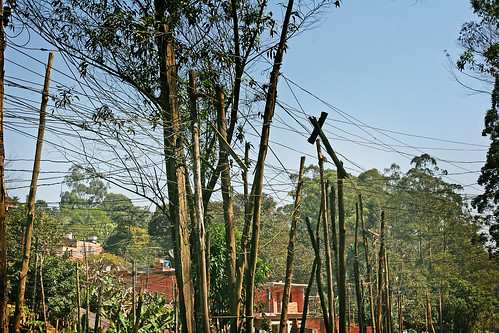
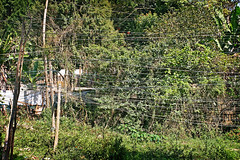
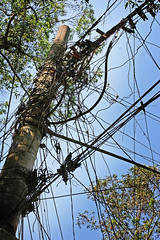
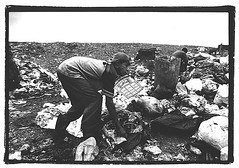

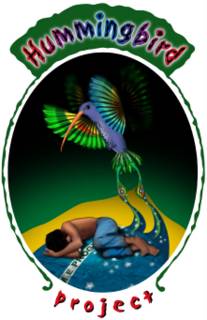


























































No comments:
Post a Comment